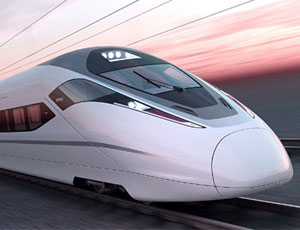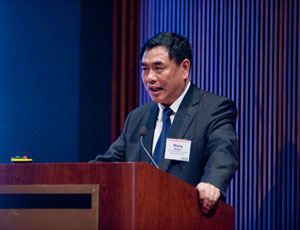International engineers and contractors may be eyeing China as the world’s largest consumer market, but the Chinese government still wants domestic industry firms to do some market-related globetrotting of their own, particularly in rail construction.


The state-owned China Railway Construction Corp. (CRCC) is now China’s largest and fastest-growing contractor, says Shang Qingxi, deputy chief economist. Since completing China’s first overseas rail project, the Tanzania-Zambia railway, in 1979, CRCC has worked in 60 foreign countries, with international projects now comprising 40% of total revenue. It claims 42 overseas projects now under construction worth $22 billion, with $8.2 billion in overseas contracts signed in 2009. The company’s 2009 earnings report, released on April 26, noted a net operating profit of $966 million, an 81% jump over the previous 12-month period.
Work abroad ranges from involvement in a light-rail concession with the city of Tel Aviv, Israel, to industrial rail lines in Libya. A passenger high-speed rail project in Saudi Arabia will connect Mecca to Medina in just half an hour at speeds of 360 kilometers per hour.
Early in April, China’s Ministry of Railways announced the possibility of extending its high-speed train network into Europe with two possible lines: one ending in Germany via Russia, the other traversing South Asia, connecting into the Middle East and terminating in London, in what the Chinese hope would be a two-day trip. Construction has already begun on a third transnational line through Southeast Asia and ending in Malaysia, says Wang Mengshu, a member of the Chinese Academy of Engineering.
China’s rail companies are fast becoming world leaders in planning, design and construction of freight, passenger, light-rail and high-speed-rail projects. As China upgrades and expands its own rail system, it is creating economies of large-scale production for the export industry, observers say. “The sheer volume of equipment that they will require and the technology that will have to be developed will simply catapult them into a leadership position,” says Stephen Gardner, Amtrak vice president for policy and development. Infrastructure, particularly transportation, was a key beneficiary of China’s $59-million economic stimulus package in 2008, says Shang.
CRCC has raised money by offering shares on both the Shanghai and Hong Kong stock exchanges. Its IPO in early 2009 raised $5.7 billion, 90% of which was earmarked to purchase equipment to be used in overseas projects. In February, the company announced plans to raise up to $1.17 billion through a private placement of about one billion premium shares, according to media reports.
Government financing and other incentives give Chinese firms an advantage when bidding in foreign nations. For example, in March, CRCC won a contract to build and operate an Indonesian coal railway, with Chinese government-owned financial institutions offering good terms. Negotiations over expansion of a Southeast Asia rail line in Burma partly hinged on China offering to cover costs in exchange for access to the country’s reserves of lithium, a valuable metal used in batteries and a key investment area for the Chinese. Also, laborers, engineers and managers on all CRCC projects are selected domestically and flown on-site, says Guo Jinfang, an official in the Dept. of Overseas Human Resources Administration of the China Civil Engineering Construction Corp., CRCC’s overseas unit.

Post a comment to this article
Report Abusive Comment